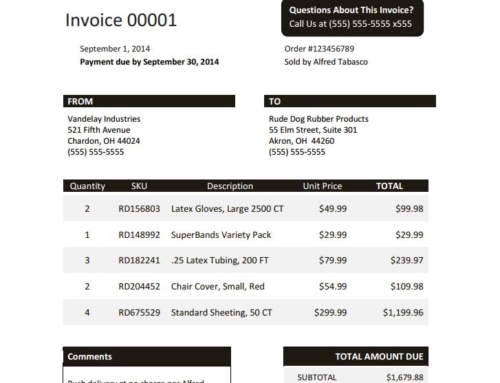As an accounts receivable professional, you can often feel like you spend a majority of your time chasing people around. You’re calling them and emailing them trying to collect a payment and, sometimes, they can be actively ignoring you. You may be playing phone tag with each other, creating an exhausting endless cycle.
This cycle can be broken by changing your tactics in accounts receivable. Instead of chasing down the customer, get ahead of the schedule. Start being proactive and keeping accounts from going overdue, rather than reactive and scrambling to get paid on time. Below are some ways to get ahead of the game and work proactively.
TRACK WRITE OFFS
If a receivable cannot be converted into cash and the collection efforts have stopped, then the receivable is considered of no further use to the business and is written off. Most write offs occur because an account have taken too long to pay. The older an account becomes, the less likely you are to collect. In fact, 70 percent of invoices 6 months old will never be collected on and 90 percent of year old invoices are noncollectable. Don’t let invoices become that old. Push customer to pay no later than 3 months. By minimizing these write offs, the accounts receivable department will have more cash flow.
USE AGING REPORTS
An aging report gives you a better look at what needs to be collected for the month. It will show you exactly what accounts are past due and which accounts you should focus on collecting. You can put your customers into aging buckets based on whether they are 0-30 days past due, 31-60 days past due, 61-90 days past due or 91 plus days past due. Based on where the customers fall, you can focus on those furthest past due and act proactively on those that are getting close by sending them reminders. Check out our template on how to create an aging report in Excel.
CHECK CREDIT RISK
Checking your customer’s credit history before allowing them to take out a line of credit with you is the easiest way to ensure you can maintain healthy accounts receivable. There are a few ways you can assess a customer’s credit risk. The first is to ask for references who you can call to ask about their payment history and reputation. The second is to check trade credit reports and credit scores through places like CreditSafe, NACM or Dun & Bradstreet.
USE AUTOMATION
Automation is one of the easiest ways to ensure you are staying proactive in your accounts receivable. Accounts receivable automation software can alert you when a promise to pay is broken, when an account has gone past due and prioritize your day based on which accounts need to be contacted first. You can set up automated emails to contact customers and remind them to pay, leaving more time to spend calling those that are the latest past due.




